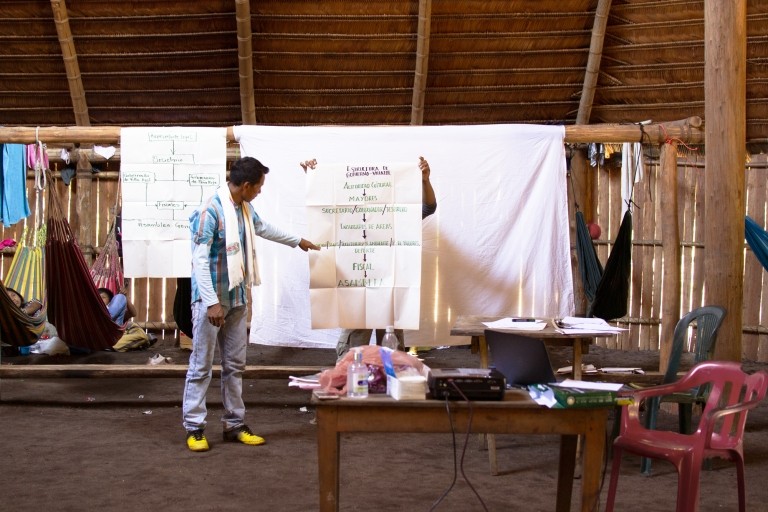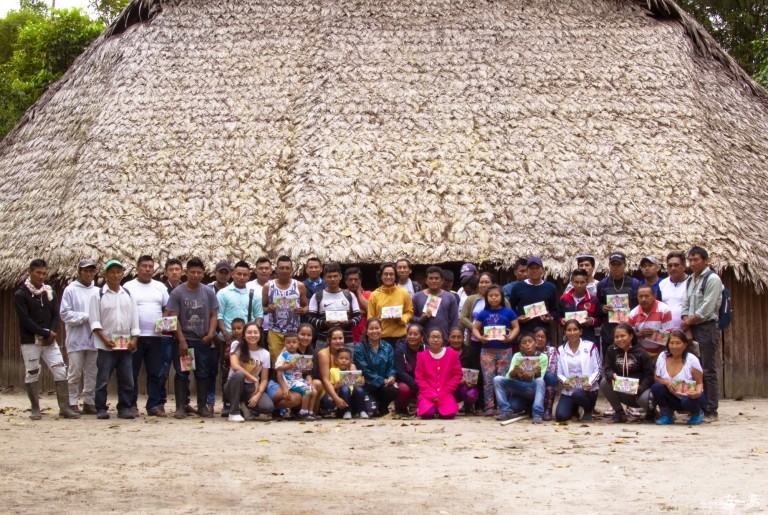Feature
With support from Pact, an indigenous organization awakens
As humans, we tend to fall victim to automatic pilot mode: We move forward without being fully engaged in where we’re going. The same happens to organizations. They may know what their aims are, but not necessarily how to get there or if they are indeed moving toward them.
Nonuya Villazul Indigenous Reservation, in the Colombian Amazon, was one such organization. In Colombia, indigenous reservations are a legal entity that grants autonomy to indigenous peoples regarding their territories and governance. In Nonuya, Eladio Moreno, legal representative of the reservation, recently became its newest driver. Its members have been working to redefine their government structure since 2019, to bring together both of the communities that live there, the Peña Roja and Villazul.

Within Pact’s USAID-funded Strengthening the Capacities of Indigenous Peoples in the Amazon (SCIOA) project, and with the support of the Foundation for Conservation and Sustainable Development (FCDS), the reservation identified its strengths and weaknesses using culturally-oriented assessment tools. It also received a small grant to strengthen its governance through a recent capacity building process in which it not only designated a driver, but also a common destination.
“We have long known that we needed to strengthen our reservation,” Moreno said. “We needed to revise our government structures, our traditions and culture and much more. Yet it was only recently that we actually did it. It was with this capacity building process that we woke up.”
Specifically, the Nonuya Reservation “woke up” from its automatic pilot mode through two activities. In the capacity development process, first, it defined a common government structure that resulted in updated bylaws, the election of a legal representative (Eladio), and the definition of some internal rules to apply for financial funds and projects. Pact and the FCDS supported the reservation financially, legally and logistically to achieve these goals.

Second, the reservation reconnected youth with their culture through a traditional medicine activity as part of its Institutional Strengthening Plan. In it, elders shared their medical knowledge with youth to create a booklet of medicinal plants and epidemiological seasons. Beyond the booklet, this activity strengthened the reservation by preserving its traditions and building sustainability, as youth will be its future leaders.
Now, with new intentionality, the ride begins. More voices are being heard to guide the driver: Youth expressed that this process has opened room for their opinions. Women have also been invited along, although they still need to become more involved in decision-making processes. Elders remain as counselors as traditions are renewed. As one, the reservation is taking control over its own strengthening process, yearning for its destination while being conscious of the journey.

The SCIOA team is glad to have accompanied the Nonuya Reservation, as well as 12 other indigenous peoples organizations in four other Amazonian countries, Peru, Brazil, Guyana and Suriname. We celebrate the goals these organizations have achieved since they started their own strengthening processes in 2019, aiming to better advocate for the rights of indigenous peoples and their territories.